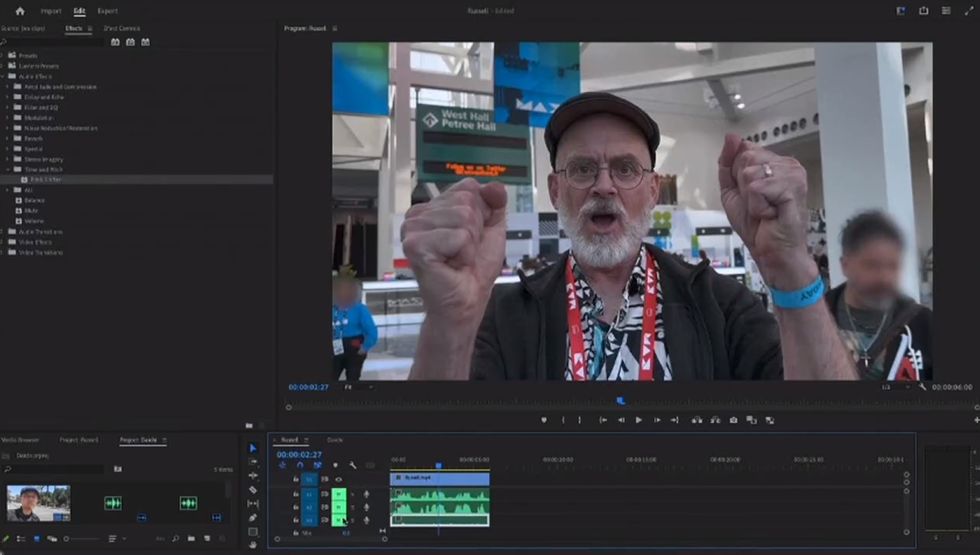
As usual, out of the several cool new innovations unveiled as part of the Adobe Sneaks program at each year’s Adobe MAX conference, it’s hard to pinpoint exactly which new technology will actually become the next big thing.
This year’s Adobe Sneaks program really seemed to be centered on bringing the AI power of Firefly to video, most notably with new features like Project Fast Fill, which you can read about here. However, one new feature that almost flew under the radar might end up being the biggest development for audio and video editors in quite some time.
Adobe’s new Project Sound Lift promises to break apart messy audio and use its AI-powers to separate background noises from the sound of someone’s voice. Let’s take a look at this new feature and explore how it might revolutionize your audio and video editing workflows.
Adobe’s Project Sound Lift
With new insights coming to us from a recent demo that Adobe shared with The Verge, it certainly sounds like this new technology is set to truly revolutionize the world of audio editing. As we’ll explore in a bit, add a major tool to any video editor’s arsenal as well.
With its previewed design, all Adobe users will need to do is import an audio file into the app, and then simply choose which sound they’d like for the tool to filter out. There are a few built-in options that users will be able to choose from, including applause, traffic, alarms, laughter, crowds, typing, other voices, and more.
Once given the task, Adobe’s Project Sound Lift will use its AI powers to automatically detect each sound and pull it out, in the process creating separate tracks for each sound which you can then important and individually edit in Premiere Pro.
Project Sound Lift for Video Editing

As you can see in the demo shared above, this technology isn’t perfect just yet, but it appears to be quite powerful—especially for a new technology that is still being developed. Of course, some other apps on the market do this, but this appears to be a more sophisticated audio removal tool that isn’t just working to mask unwanted sounds.
For video editors specifically, this could be a great feature that could either be viewed as a revolutionary tool that could save projects that you might have given up on, or perhaps simply as a time-saving tool to help you do the manual task of EQ adjusting out your unwanted sounds.
Plus, with this being an Adobe innovation, its inclusion directly into Premiere Pro will be very appreciated by those already using this legacy NLE. Off the top of my head, I can think of several recent video projects in which this would be quite helpful, either just cleaning up audio or sometimes even helping to pull separate voices out into their timelines for clearer editing.
The Future of AI Audio Editing
As with any AI-powered anything, we’re still very much in the early stages of what this technology can do—if not just today, but tomorrow, and into the future. This Project Sound Lift is going to get better as it learns, and as well as its engineers take in the feedback provided by actual audio and video editors.
However, if you want any proof of how well this type of technology can work, the best example might be the recent restoration and release of the first Beatles song in almost 30 years.
As The Verge covered, the producers of this unreleased track from The Beatles were able to use many of these AI-powered technologies to separate and restore audio from an old cassette tape recording.
If that’s the type of power we’re dealing with today, it’s undeniable that it’s going to get much crazier here in the future.
Author: Jourdan Aldredge
This article comes from No Film School and can be read on the original site.
